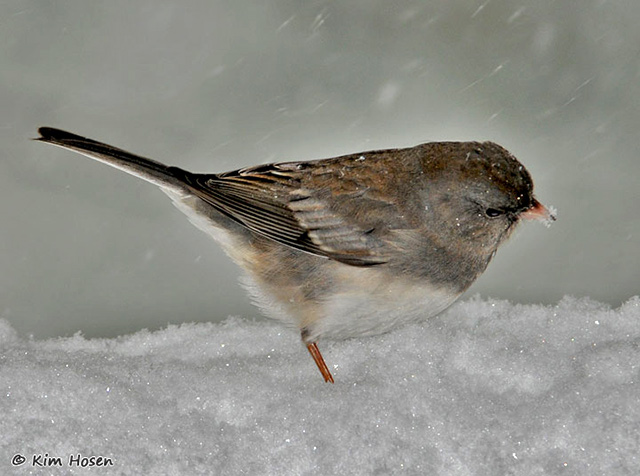
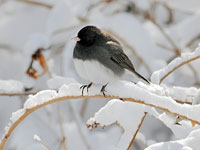 |
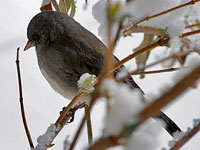 |
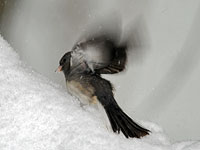 |
|
Photos: © Kim Hosen, Suburban backyard in Northern Virginia, March 2 2009 and December 2 2009 Text by Ellen Katinas |
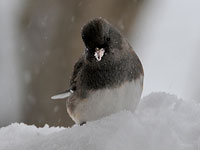 |
|
Dark-eyed Junco Songwriters, take note: an enigmatic bird with a poetic name makes a perfect subject for a ballad. “Junco” is Spanish for “rushes,” yet rushes grow in the wetlands and these birds prefer forests. No one knows for sure how the name Junco came about. Dark-Eyed, they definitely are. There are gray-headed, pink-sided, red-backed, slate-colored, and white-winged Junco groups, but many bird authorities view these as distinct species. Adult Dark-Eyed Juncos have dark gray, almost black, backs; their bellies and lateral tail feathers are white, giving them a distinctive air. A male who has just staked out his territory in breeding season will flare his tail and fan his wings to show off what he’s got. A female chooses her mate based on this. Both males and females are territorial, especially if offspring are in the nest. Young birds depend on both parents for feeding for a total of about 5 weeks. The North American Breeding Bird Survey reports that the Dark-Eyed Junco population declined by about one half between 1966 and 2015. Nevertheless, they are one of North America’s most common birds. They have been observed from Alaska to Mexico and from California to New York. They winter in fields, woodlands, parks, and gardens. When breeding, they prefer forests. The birds are obviously unperturbed by human presence and have been known to build their nests inside buildings and under crawl spaces. In remote areas, the nests appear on sloping ground or in the roots of upturned trees. |





